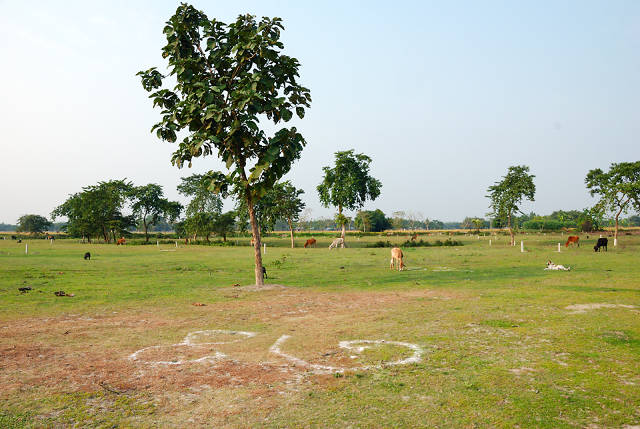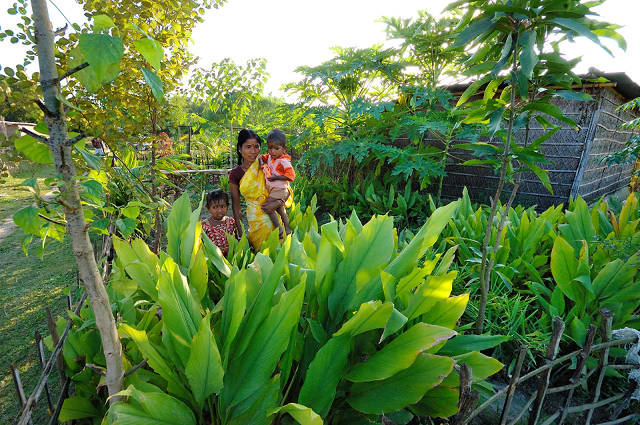Guest post by Ariel Schwartz, Senior Editor of FastCompany’s Co.Exist site. This article was originally published on July 10, 2012 on FastCoExist.com.
Land ownership is an important factor in getting people on an upwardly mobile path. But how much land do you need to own? Less than you would think.
The majority of the world’s poor share three traits: they live in rural areas, they rely on the land to survive, and they don’t have rights to that land. In India, the government has in the past tried to give out entire farms to the poor–but there were just too many people and not enough money. Landesa, an organization that helps families around the world secure land rights, is stepping in with a more practical solution: microplots of land.

“Microplots were our tool to allow governments like India to help the poorest of the poor without breaking their bank and giving more land than they have in the entire country,” explains Rena Singer, senior communications manager at Landesa. By working with government partners, Landesa has secured rights for over 430,000 families in India–including everyone located in a brand-new village in West Bengal.
The village of Adarsanagar didn’t exist until two years ago, when Landesa and the Indian government worked together to bring 56 poor, landless families into the area. Each family has its own microplot of land. “The program that we helped design involves the government buying land on the private market in a place where there are landless families and involving the landless families in identifying that land,” says Robert Mitchell, senior director of program quality and learning at Landesa. “The idea was to create a colony because for various reasons people prefer to live together rather than apart from one another, and it makes sense to purchase land this way because it’s much more efficient.”

Everyone in the village owns a tennis court-sized piece of land–big enough for a home, some small livestock, a garden, and trees. Generally, Landesa prefers for the microplots to be about a tenth of an acre, but in certain areas they can be as small as half of that.
The villagers’ lives have changed dramatically since they were given their land. They’re eating two or three times a day instead of once, women are able to launch home businesses (impossible previously because they were living doubled up with relatives or in a landlord’s house), and all the kids in the village are going to school. The microplots also give villagers negotiating power with employers. In the past, they often lived on their employers’ land, so they couldn’t ask for raises (the landlord would just tell them to go somewhere else). Now they can.
“The intention here is not to provide families with a complete livelihood. It’s a foothold out of poverty,” says Mitchell. “If a family falls on even leaner times, having this plot of land gives them some food security that they can fall back on and a cushion against economic shocks.”

Comments 1
The following sentence from this blog post is inaccurate: “In India, the government has in the past tried to give out entire farms to the poor–but there were just too many people and not enough money.” In fact, Indian states in the post-independence period–with notable exceptions like West Bengal–undertook very half-hearted land reforms because they were controlled by agrarian elites, who moreover found ways to evade what land distribution was instituted. Since then, the limit to land reform has been political will, not money and population. While giving small plots to the poor is better than nothing, it is unclear how generalizable a model this is. What were these families charged for the plots? It is at best unlikely that a market-led, voluntary process of land reform can do much to correct the unequal distribution of land in rural India. The history of the Bhoodan movement is ample testimony to that.